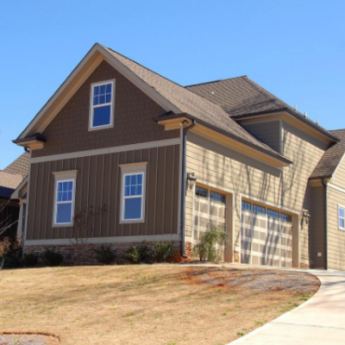Build Smarter, Not Harder: Four Technologies That Can Reduce Construction Costs

The construction industry is known for its high costs, which can make it difficult for developers and builders to create high-quality and affordable projects. Fortunately, recent technological advances have created new opportunities for reducing construction costs while maintaining the same level of quality.
This blog post will explore four technologies that can help reduce construction costs: 3D printing, Building Information Modeling (BIM), drones, and modular construction.
3D Printing
3D printing is a technology that allows builders to create three-dimensional objects by layering materials on top of each other. This technology has been used in various industries for years, but it has only recently started being used in construction. In construction, 3D printing can potentially reduce costs by eliminating waste and reducing labor costs.
Advantages Of 3d Printing In Construction
Reduced Waste
Traditional construction often creates a lot of waste due to the need to cut and shape materials to fit. With 3D printing, materials are only used as needed, reducing waste.
Faster Construction
3D printing can create structures much faster than traditional methods, reducing labor costs.
Customization
3D printing allows for greater customization, making creating unique designs and shapes easier.
Examples Of 3D Printing In Construction
- In China, a company used 3D printing to build 10 houses in just 24 hours.
- In Dubai, 3D printing was used to construct a 2,700-square-foot office building in just 17 days.
Potential Savings From 3D Printing:
Material Savings
3D printing can reduce material waste, saving money on construction materials.
Labour Savings
3D printing can reduce the need for manual labor, which can lead to significant cost savings.
Building Information Modeling (BIM)
Building Information Modeling (BIM) is a technology that allows builders to create digital models of buildings before construction. This technology has been used in the construction industry for several years, and it can potentially reduce costs by improving communication and reducing errors.
Advantages Of BIM In Construction
Improved Communication
BIM allows builders, architects, and engineers to communicate more effectively, reducing the risk of errors and miscommunication.
Reduced Errors
BIM can help identify potential issues before construction begins, reducing the risk of errors and delays.
Cost Estimation
BIM can help builders estimate the cost of a project more accurately, reducing the risk of cost overruns.
Examples Of BIM In Construction
- In Norway, BIM was used to construct a 14-story building in just 15 months, reducing construction costs by 15%.
- In the United States, BIM was used to construct a $400 million hospital, reducing the number of change orders by 90%.
Potential Savings From BIM
Reduced Errors
BIM can help reduce the risk of errors and delays, saving money on labor and materials.
Cost Estimation
BIM can help builders estimate the cost of a project more accurately, reducing the risk of cost overruns.
Drones
Drones are unmanned aerial vehicles that can capture images and data from construction sites. Drones have been used in the construction industry for several years, and they have the potential to reduce costs by improving safety and efficiency.
Advantages Of Drones In Construction
Improved Safety
Drones can inspect construction sites from the air, reducing the risk of accidents.
Improved Efficiency
Drones can be used to survey construction sites quickly and accurately, reducing the time and cost of site surveys.
Improved Monitoring
Drones can be used to monitor construction sites, making it easier to identify potential issues before they become problems
Examples Of Drones In Construction
- In the UK, drones were used to survey a construction site and create a 3D map, reducing the surveying time from 2 weeks to just two days.
- In the United States, drones were used to inspect a bridge for damage after a hurricane, reducing the need for manual inspections and improving safety.
Potential Savings From Drones
Reduced Labour Costs
Drones can reduce the need for manual labor, leading to significant cost savings.
Improved Efficiency
Drones can improve efficiency by reducing the time and cost of site surveys and inspections.
Reduced Risk Of Accidents
Drones can improve safety by reducing the need for workers to perform dangerous tasks.
Modular Construction
Modular construction is a process in which buildings are constructed off-site in modules and assembled on-site. This process has been used in the construction industry for years, but it has only recently started gaining popularity as a way to reduce costs.
Advantages Of Modular Construction
Reduced Construction Time
Modular construction can reduce construction time by up to 50%, reducing labor costs.
Reduced Waste
Modular construction produces less waste than traditional construction methods, reducing material costs.
Improved Quality
Modular construction is done in a controlled environment, which can lead to higher-quality buildings.
Examples Of Modular Construction
- In the United States, a hotel was constructed using modular construction, reducing construction time by four months and saving $1.5 million in labor costs.
- In India, a company used modular construction to build a 10-story building in just 48 hours.
Potential Savings From Modular Construction
Reduced Labor Costs
Modular construction can reduce the need for manual labour, which can lead to significant cost savings.
Reduced Material Costs
Modular construction produces less waste than traditional construction methods, reducing material costs.
Comparison Of The Four Technologies
While each of these technologies has the potential to reduce construction costs, they also have their limitations. For example, 3D printing is still a relatively new technology, and it may not be suitable for all construction projects.
BIM requires a significant investment in technology and training, which can hinder adoption for some companies. Drones may not be suitable for all construction sites due to safety concerns, and modular construction may not suit all types of buildings.
However, when used together, these technologies can significantly impact construction costs. For example, on-site 3D printing to assemble modular components can lead to even greater cost savings. Combining BIM with drones can lead to more accurate site surveys and inspections, reducing the risk of errors and delays.
Overcoming Challenges In Implementing Cost-Saving Technologies In Construction
While there are many benefits to implementing 3D printing, BIM, drones, or modular construction, there are also potential challenges that builders and developers need to be aware of when adopting these cost-saving technologies. Some of the major challenges include:
Initial Investment Costs
Adopting new technology can come with a high upfront cost, including the cost of purchasing new equipment and software or hiring experts to implement and train employees on these technologies. However, it’s important to weigh these initial costs against the long-term savings that can be achieved.
Lack Of Skilled Workforce
Companies can tackle the shortage of skilled labor in adopting new technologies for construction by offering training programs, including a BIM course, to equip their employees with the essential skills and knowledge required for effectively utilizing BIM software in construction projects.
By investing in such programs, companies can guarantee that their workforce possesses the necessary expertise to utilize these cost-saving technologies efficiently and effectively.
Resistance To Change From Traditional Construction Methods
Some employees or stakeholders may hesitate to adopt new technologies and processes, especially if they have used traditional construction methods for years. It’s important to involve everyone in the process and communicate the benefits of these new technologies to help overcome resistance.
Possible Safety Concerns
Implementing drones or 3D printing, for example, may raise safety concerns if not used properly. Employers must ensure workers are properly trained and safety protocols are followed to prevent accidents.
Possible Legal And Regulatory Hurdles
Implementing new technology can sometimes be met with legal or regulatory hurdles. For example, regulations surrounding the use of drones may vary by state or country, and companies may need to obtain proper licensing or permits before using them on a job site.
Conclusion
The construction industry has seen significant technological advancements that can help reduce costs while maintaining quality. The technologies discussed in this post, 3D printing, Building Information Modeling (BIM), drones, and modular construction, have the potential to significantly reduce labor and material costs, improve safety and efficiency, and reduce waste.
While each technology has limitations, their potential for cost savings and improved quality make them valuable tools for the construction industry.
Read Also:











Leave A Reply